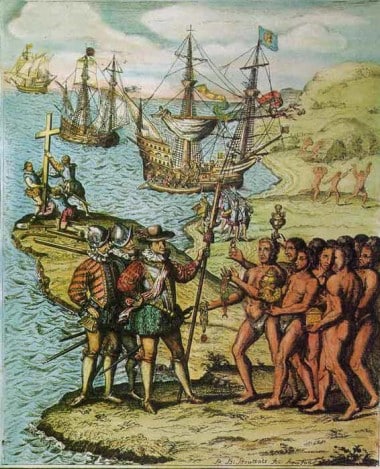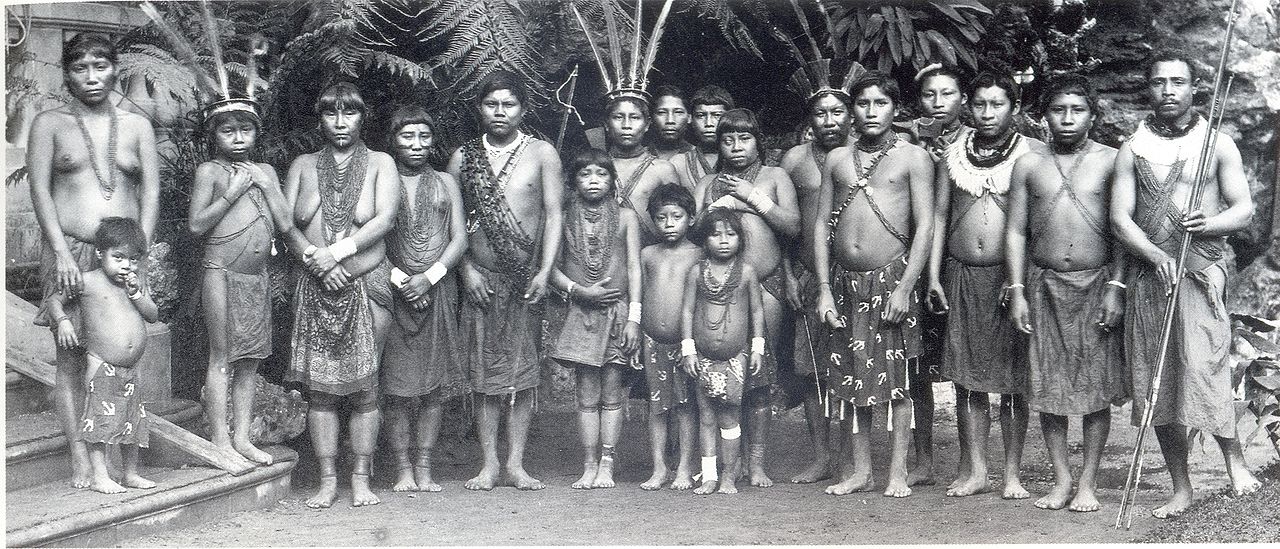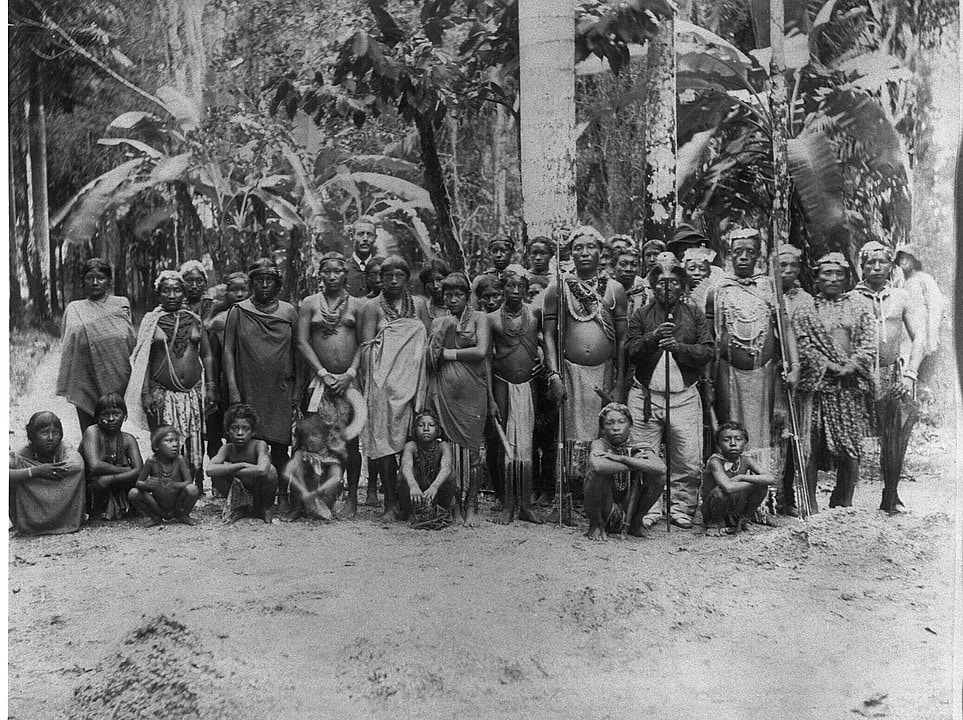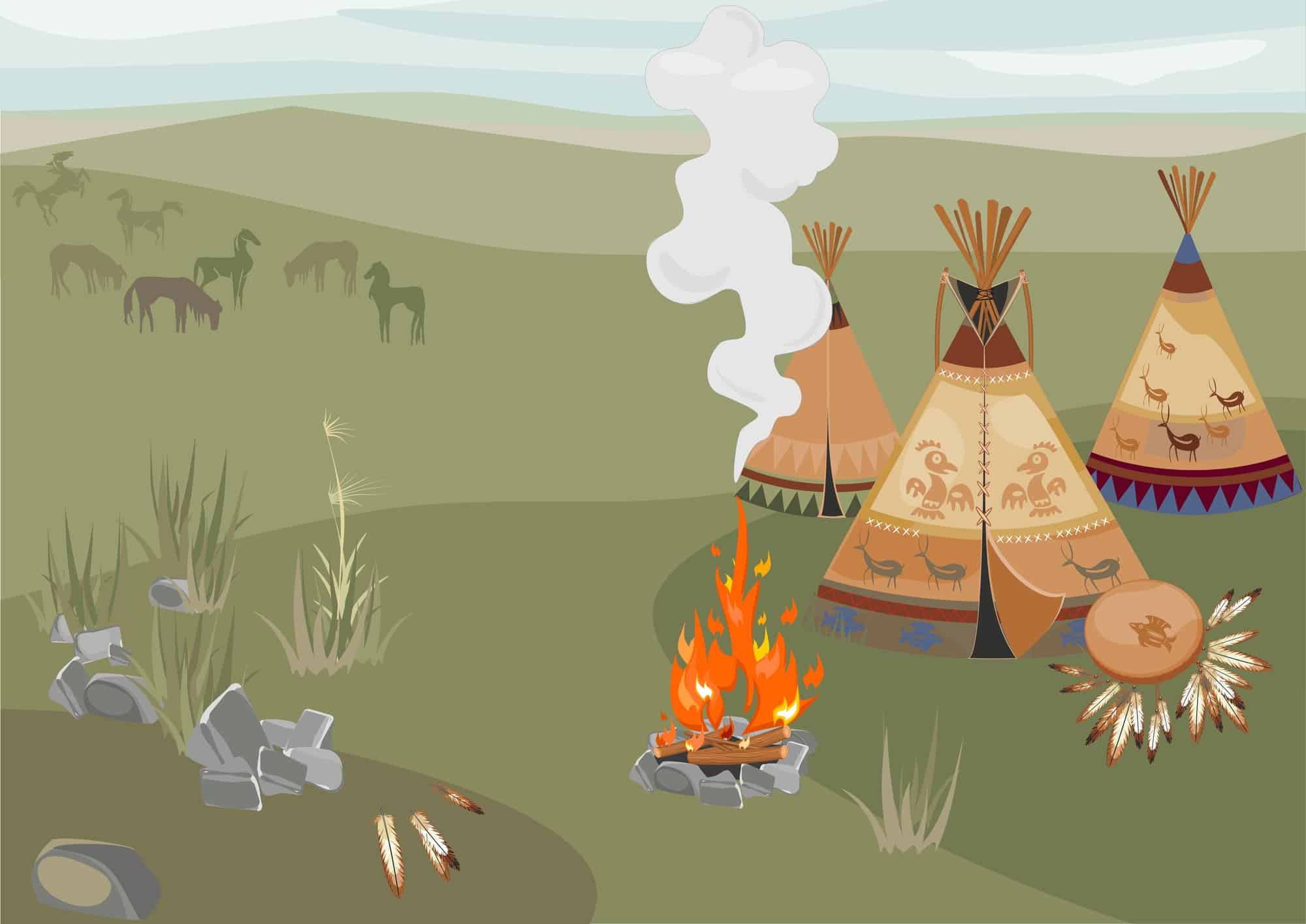The story of Columbus' landing is one that most people in the American continent would be familiar with. Most people know that Columbus set sail with three ships from Spain in the fifteenth century. Upon landing in the Caribbean, he met two types of native peoples there - the Caribs and the Arawaks. The Arawaks were friendly people. On the contrary, the Caribs were hostile cannibals who ate human flesh. Most of us know that.

Columbus meeting the Indigenous People of the Caribbean (Picture credits)
But these were Columbus' views, not the truth.
So, was Columbus actually telling the truth? Were Caribs really cannibals? Who were the Arawaks and Caribs really, and how did they live? Read on and find out.
Caribs and the Arawaks
The indigenous people who inhabited the Caribbean at the time of Columbus' arrival were the Kalinago and the Lokono. Both these native populations came to the Caribbean islands from South America. They survived by fishing, hunting, and farming.
Neither of these American Indians had a written language. So, most of their faint history from this time comes from stories that were passed down orally through generations.
The Lokono was the indigenous population who inhabited the Caribbean initially. The Kalinagos and the Kalinas originally lived in South America. But centuries before the arrival of Columbus, the Kalinagos started migrating to the Caribbean. After hundreds of years of warfare, they managed to seize the southern islands of the Caribbean from the Lokono. Eventually, they started living there but were perpetually engaged in warfare against the Lokono.
The Lokono (Arawaks)
The Lokono lived by fishing, hunting, and farming. They used trickery to catch birds like ducks. The technique they used to catch these birds is fascinating.
The Lokono first let a number of calabashes, a tropical American fruit, float on the river. Then, he waited until the ducks got used to these fruits and considered them harmless objects. Once that happened, a Lokono male placed a calabash over his head and slipped into the water silently. Then, when he neared the duck, he pulled its legs until the bird drowned and died before putting it in a bag and taking it away.
Interesting, isn't it?
Most of the Lokono were naked. But they wore gold in their noses and painted their faces and bare body parts. In some of the Caribbean islands, married women wore skirts around their waists.
Their society was patriarchal. They practiced polygamy, with each man having two or three wives. The leader of the Lokonos was called Cacique and had as many as 30 wives. It was a great honor to be married to the leader. Hence, his wives wore longer skirts, portraying authority.
They built their houses using wooden posts, grass, and other materials. Around 10 to 15 men lived in each house, with all their wives and entire families. So, each house had around 100 people. Only the Cacique, the Lokono chief, lived in a separate house with his wives. But since he had a lot of wives and children, his house would have around 100 people. The title of Cacique was passed down from father to son.
The Lokono were people who loved peace. But since they had to fight the Kalinagos often, they had to defend themselves. So, they had weapons like poisoned arrows, war clubs, and spears with fish hooks attached on one end.
Despite being peaceful folk, the Lokono had slaves too. They used their prisoners as slaves. These slaves were made to do jobs, which the members of the tribe were not expected to do. But slavery was not passed on to successive generations. Slavery was just a way for the Lokono to make their prisoners work hard before accepting them into their tribe.
The Kalinago (Island-Caribs)
In contrast, the Kalinago were people who emphasized on fighting. Their culture honored physical powers and individualism. Kalinago groups often fought against other Kalinago groups and also against the neighboring Lokonos. After their battles, they took the Lokono women as slave-wives and killed the men.
Like the Lokono, the Kalinago, too, wore little to no dress. But they painted their bodies to appear fierce and ate a lot of pepper to become fierce. They used weapons like poisoned arrows, burning arrows, and other weapons deadlier than those of Lokono.
The Kalinago started training their children to fight from a very early age. Almost always, the initiation began by teaching the children to bear the pain.
When a boy reached puberty, the Kalinago scratched his body with animals' claws and rubbed pepper in the wound. If the boy flinched, he was trained to become a priest. If he didn't, he was trained to become a warrior.
The Kalinago chief was chosen based on his skills in battle. The Kalinagos lived mostly separated by gender. The men in the village lived together in a large building, where they trained. The women, on the other hand, lived in many smaller houses. The women mostly met their husbands only when they brought food for them.
The Kalinago were expert swimmers for whom fishing and sea trading were very important. They were also skilled boat-builders, sailors, and navigators who could remember the way to several islands by heart.
The Kalina (Mainland-Caribs)
The Kalina was an indigenous population who lived in the northern coastal areas of South America. They may have been related to the Kalinaga. But they were not as aggressive as the Kalinaga.
They spent their day growing crops like cassava and hunting using a bow and arrow. They lived in small settlements.
Historically, the Kalina and Kalinaga were thought of as being related to each other. So, the Europeans started calling them as Mainland-Caribs because they lived in the mainland of South America, whereas the Kalinago were called Island-Caribs because they lived in the Caribbean islands (More on why Kalinago came to be known as Caribs later on).
The Lokono, The Kalinago, and the Spanish conquest
When Columbus came to the Caribbean, he first met the Lokono, who were friendly to him. As he sailed further south, he met the hostile Kalinagos, with whom he did not get along well.
There was a Lokono settlement in a village called Aruacay. The people he met there were very friendly to the Spanish explorers and offered them gifts. For reasons unknown, the Lokono people who lived in Aruacay started calling themselves as the Aruacas to differentiate themselves from the hostile Kalinagos and show to the Spanish that they were a friendly group. With time, the term Aruaca became Arawak, the peace-loving people of the Caribbean.
The term 'Carib' was supposed to mean brave. And the Kalinagos were brave for standing up against the Spanish conquerors. So, they came to be known as Caribs. But for Columbus, brave meant aggressive. So, he created a myth that Caribs were people-eating savages to get the authorization for acquiring them as slaves. He even used their name to create the term Caniba, which would eventually become the term Cannibal in English. But in reality, Caribs were not cannibals.
The human flesh-eating Ritual of the Caribs
The Caribs ate human flesh only during rituals. The Caribs believed that eating a small amount of human flesh would give them the characteristics of the deceased person. This belief was central to their culture.
So, they ate small amounts of flesh before wars so that their warriors can obtain the characteristics of their enemies, and during initiation, so that young boys can become brave like deceased heroes. They also kept the bones of their victims as trophies.
But these customs were not practiced by the Caribs alone. The Arawaks had similar customs as well. But neither of these indigenous groups practiced widespread cannibalism, as Columbus claimed.
But Christopher Columbus' propaganda, despite being untrue, helped him obtain permission from the Spanish monarchy for procuring slaves. In 1503, Queen Isabella gave permission to capture the so-called cannibals. She believed that it was the only way to protect the Arawaks, who, according to her, were now her subjects. It was also the first step to convert the Caribs into civilized human beings.
But we all know what happened after that. Her permission created an urgency among the Spanish explorers to find as many Caribs as possible. And since Arawaks had similar customs as well, Arawaks were also captured. Then the captured Arawaks and Caribs were made to work as slaves in their own homeland. Most of them died due to abuse, the inhuman working conditions, and the diseases the Spanish brought with them, to which they had absolutely no immunity.
Are there any Caribs and Arawaks left today?
Today, not a lot of Caribs and Arawaks are left.
Where do the Caribs live today?
Only around 3400 Caribs are alive today. Of these, only 60 consider themselves pure Caribs. They live as one of the minorities in Dominica.

A picture of some Caribs in 1892 - By Roland Bonaparte - Photothèque, Musée de l'Homme, Paris. (Photo scanned from the book Pau:wa itiosan:bola: Des Galibi à Paris en 1892.), Public Domain, Link
The Dominican government has built primary schools, water, and health facilities for these people in their territories. They also have a police station that employs three people, who are mostly Caribs.
But there are no secondary schools in the Carib territories. So, understandably, the unemployment rate is very high there.
As a result, the incomes of these people are lower than the Dominican national per capita income. They survive mostly by farming their land collectively and selling handicrafts they made to tourists.
Where do the Arawaks live today?
Today, around 10,000 Arawaks live in the coastal areas of North America.

Picture of some Arawaks in 1880 - By Tropenmuseum, part of the National Museum of World Cultures, CC BY-SA 3.0, Link
They are primarily concentrated in Venezuela, Suriname, Guyana, and French Guiana. More Arawaks live in the interior parts of South America as well. Unlike other indigenous communities, the population of Arawaks has been growing steadily in the last few years.
